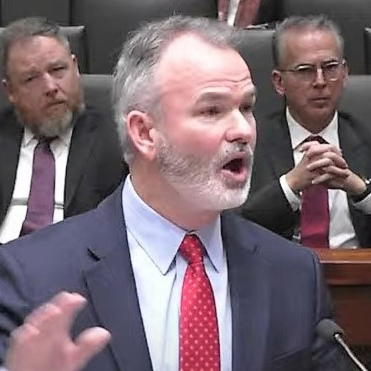The Biden administration on Tuesday released what it described as a national plan to eliminate carbon dioxide and other greenhouse gas emissions from the nation’s transportation sector by 2050, including from private automobiles, the trucking industry, freight and passenger rail, and aviation.
The 88-page National Blueprint for Transportation Decarbonization argues that successfully addressing the climate crisis will require nothing less than a total commitment of the federal government working with state, local and tribal governments, and with industry.
Underlying these objectives will be the research, development and refinement of new technologies: battery electric systems in light-duty vehicles, fuel cell electric systems running on hydrogen in heavy trucking, synthetic low-carbon liquid fuels for aviation and maritime use.
Transportation accounts for up to 29% of all U.S. emissions, and the administration announced as early as April 2021 its goal to reduce emissions from the sector by 50 to 52% by 2030 compared to 2005.
The blueprint is the work of the departments of Energy, Transportation and Housing and Urban Development, and EPA. It describes itself as “the first comprehensive, whole-of-government approach to decarbonizing the transportation sector that aligns decision-making among agencies and identifies new and innovative opportunities for collaboration that are critical to achieving our shared vision of a future decarbonized transportation system.”
“It’s not an accident that these four agencies are represented here. It is because the president has made it clear that he expects to see action,” Jeff Marootian, senior adviser at DOE, said at a launch event for the report at the Transportation Research Board’s Annual Meeting in D.C.
“So much of the work that’s reflected in the blueprint isn’t really a starting point,” he said. “This is very much an orchestration of what has already been done, both in DOE and at other agencies as well, to help move this forward.”
The blueprint also provides the first details of the administration’s plans to use funds provided by the passage of the Infrastructure Investment and Jobs Act and the Inflation Reduction Act.
The resources from the two laws are allowing DOE and its national laboratories to deliver “end-to-end research and development so we can take these technologies that many have worked hard on developing and commercialize them, de-risk them, and help really support our partners in industry to help actually commercialize them and provide these for consumers,” Marootian added.
“The blueprint is predicated on three ideas,” said Andrew Wishnia, deputy assistant secretary for climate policy at DOT. “One is how do we improve convenience? The second is how do we improve efficiency? And the third is how do we improve clean options?”
On convenience, for example, Wishnia pointed to funding from the IIJA that will support “more bike infrastructure, more walking infrastructure, better land use coordination [and] more money going to metropolitan planning organizations.”
But the blueprint acknowledges that the third “idea” will drive the majority of emission reductions. Given the broad array of vehicle types, technologies and usage patterns, a successful transition will require various vehicle and fuel solutions and must consider full life-cycle emissions.
It also acknowledges the impact transportation technologies have had on U.S. society over time, pledging that remaking transportation will be done with a clear focus on the impact it will have on communities. It includes more federal attention to urban planning.
Marion McFadden, principal deputy assistant secretary for community planning and development at HUD, stressed “the interconnectedness of transportation and where people live.”
“Decarbonizing transportation will affect everyone, and solutions must address the needs of all urban, suburban and rural communities; businesses of all sizes; and individuals and families at every socioeconomic level,” the blueprint predicts in an introductory explanation.
Recognizing the enormity of the undertaking, the blueprint further notes that “the scope, scale and speed of the shift will continue to require solutions that leverage market forces and private sector investments, which government policies and investments should jumpstart and guide.”
John Bozzella, president and CEO of the Alliance for Automotive Innovation, said the auto industry is approaching decarbonization as both an environmental and economic imperative.
Electrification is a “big opportunity for our economic competitiveness [and] our ability to compete with economies around the world,” Bozzella said. He predicted that by the end of the decade, the auto industry will pour more than a trillion dollars in electrification.
But, he said, even though “[electric] vehicle sales have doubled year over year, it’s 7% of new vehicle sales. To get to 50% by the end of the decade, it’s going to require not only an all-of-government approach at the agencies here today. … We also need to pair that with an all-of-the economy collaborative approach.”
Multiagency Approach
In remarks accompanying the release of the plan, Energy Secretary Jennifer Granholm also noted the ambitious nature of the plan’s objectives. “The domestic transportation sector presents an enormous opportunity to drastically reduce emissions that accelerate climate change and reduce harmful pollution.”
Transportation Secretary Pete Buttigieg underscored the importance of a multiagency approach.
“Transportation policy is inseparable from housing and energy policy, and transportation accounts for a major share of U.S. greenhouse gas emissions, so we must work together in an integrated way.
“Every decision about transportation is also an opportunity to build a cleaner, healthier, more prosperous future. When our air is cleaner; when more people can get good-paying jobs; when everyone stays connected to the resources they need and the people they love, we are all better off.”
EPA Administrator Michael Regan said the blueprint supports the agency’s “priority is to protect public health, especially in overburdened communities.”
Housing and Urban Development Secretary Marcia Fudge said one of her department’s objectives is to “ensure that clean transportation investments are made equitably and include communities and households that have been most harmed by environmental injustice.”

